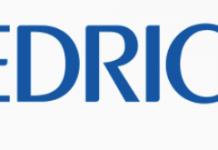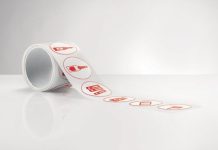In The 'Book of 12' by Antalis, 12 international graphic designers share their vision of the continued importance of paper in the digital age.
'Paper delivers an emotional experience that digital doesn’t provide…'; 'if you pick the wrong paper there is no magic…'; 'deciding on paper is as important as choosing a typeface or a colour…' These are just some of the thoughts and observations of 12 contemporary graphic designers from 12 different countries and cultures who all consider paper to be an integral part of the creative process. Interviewed by the respected writer specialised in graphic design, Véronique Vienne for a project commissioned by Antalis, Europe’s leading paper distributor, they not only share their beliefs and concerns regarding the role of paper today in an increasingly digital age, but also provide an example of their work in a collection of 12 notebooks which together create 'The Book of 12'.
The Book of 12 project was inspired by simple questions: for designers today, is the choice of paper still a creative act? Does it contribute to the impact of a message, an idea or a concept? To answer these questions, Véronique Vienne interviewed 12 graphic designers from cultural institutions as well as brand experts and heads of advertising agencies.
Hans Wolbers from The Netherlands is an art director and founder of one of Holland's leading design agencies known for its talent in creating and developing smart and trendy editorial publications: 'this is how I choose paper: as part of the initial concept'. And perhaps surprisingly, he confirms that 'the people who use the most paper in our company are the web designers…they need paper to think. It is so much faster than digital tools'.
Reza Abedini from Iran designs posters, book covers, and announcements to promote events in the Arab World but also in the Netherlands, France, Ireland, Greece, or England: 'when an idea starts to form in my mind, its paper manifests itself at the same time…I consider the type of paper, its colour, its weight, and its texture, a main part of each project. … not just the surface on which the design is printed'.
Michal Batory from Poland designs surrealist, visually-arresting concepts for posters: 'if you pick the wrong paper there is no magic…I am aware of how different the results can be, depending on the nature of the surface on which they are printed'.
Catherine Zask from France is a graphic artist, poster designer and writer in love with paper: 'the pleasurable sensation that you experience when handling paper becomes associated with the message printed on it. I do not have a favourite paper—the ultimate choice depends on the design, the client’s personality, and the message.'
Elaine Ramos from Brazil is a graphic designer as well the art director at Cosac Naify, the main publishing house in Brazil dedicated to visual arts: 'I think of the texture of the paper as an essential piece of information to share a message, an idea, a concept or an impression with readers…the paper will determine the flexibility of a book — it’s a critical choice.'
Leonardo Sonnoli from Italy focuses primarily on the visual identity of public institutions and private companies: 'It’s easier to feel that you can own a message when it is printed on paper… for a great result, the quality of the paper is almost always as important as the quality of the design.'
Eike König / Germany specialises in developing visual languages for brands, large and small, and creating visual identities for cultural institutions: “deciding on a paper is as important as choosing a typeface or a colour.” And “while working in front of computers fosters isolation, working with paper invites experimentation, participation and socialization.”
Milton Glaser from USA is probably the most famous graphic designer in the United States, well known for his I heart NY logo and his 1967 Bob Dylan poster: 'When it comes to paper, people associate authenticity with tactility.' He regrets the fact that designers often no longer draw their ideas on paper but seek ready-made images. 'For me, it is the most extraordinary encounter: a rough surface—paper—that accepts the trace of a writing tool. For a designer, it is the fundamental engagement.'
Park Kum-jun from South Korea is the award-winning founder of his own design agency who creates catalogues, exhibition posters, calendars, magazine covers and conceptual installations. 'Paper instills emotions into content and form, so I select the paper in the pre-planning stage. Sometimes, an entire plan or idea starts and grows from a specific type of paper…my work on paper gives away its mystery gradually, one discovery at a time.'
Flavia Cocchi from Switzerland focuses on typography. Printed matter is her love and paper her passion: 'I am in heaven when paper representatives come in to show me their latest designs'. She always begins a project with the choice of paper: 'it’s what triggers my creativity'.
Kaija Korpijaakko from Finland previously held several positions as a magazine art director and now works as an artist, with paper still her favourite medium. 'Better, heavier, and glossier paper was the ultimate reward. Paper is here to stay—it will just be perceived differently. Instead of being a surface on which to print text and images, it will be 'recast' as a creative medium — as an exciting material for artists and designers.'
Daniel Eatock from England started out as a graphic designer, but is now an established artist exhibiting around the world. 'Paper has six sides: a front, a back, and four edges… a blank piece of paper has infinite potential, you can do so many things with it: you can write on it, draw on it, paint on it, fold it, cut it, etc.'
The full interviews have been captured in individual notebooks, each showcasing a piece of the artists’ work with a unique design, choice of paper and printing technique to bring it to life. The transcript of the interviews, a recorded interview with Véronique Vienne as well as a video following the 'making of' the Book of 12 can all be found on a dedicated website: www.bo12.com.
'As Europe’s leading paper distributor, we are naturally convinced of the inherent added value of paper, not only in terms of its sensory qualities and better memorisation capacity, but also by the extra impact it can bring to a concept or message,' said Xavier Jouvet, Group Marketing and Purchasing Director at Antalis International.
Caroline Coughlan Marketing Manager Antalis South Africa, said, 'With the Book of 12 project, we wanted to hear what those in the graphic design and art community had to say about the role of paper in an increasingly digitalised world. Their very clear response is that paper remains a unique medium that delivers an emotional experience that digital devices cannot rival and is a source of inspiration. But we should not put paper and digital in opposition: both have an important and complementary role to play in ensuring that communication is more effective. And that role continues to evolve driven by the latest advances in technology.'





















